Sage is an evergreen shrub that is native to the Mediterranean. Sage can grow up to two meters tall and has small blue, purple, or white flowers. The leaves have a strong aromatic smell and are used as an herb in cooking. Sage can be grown in pots or the ground and does best in full sun or partial shade.
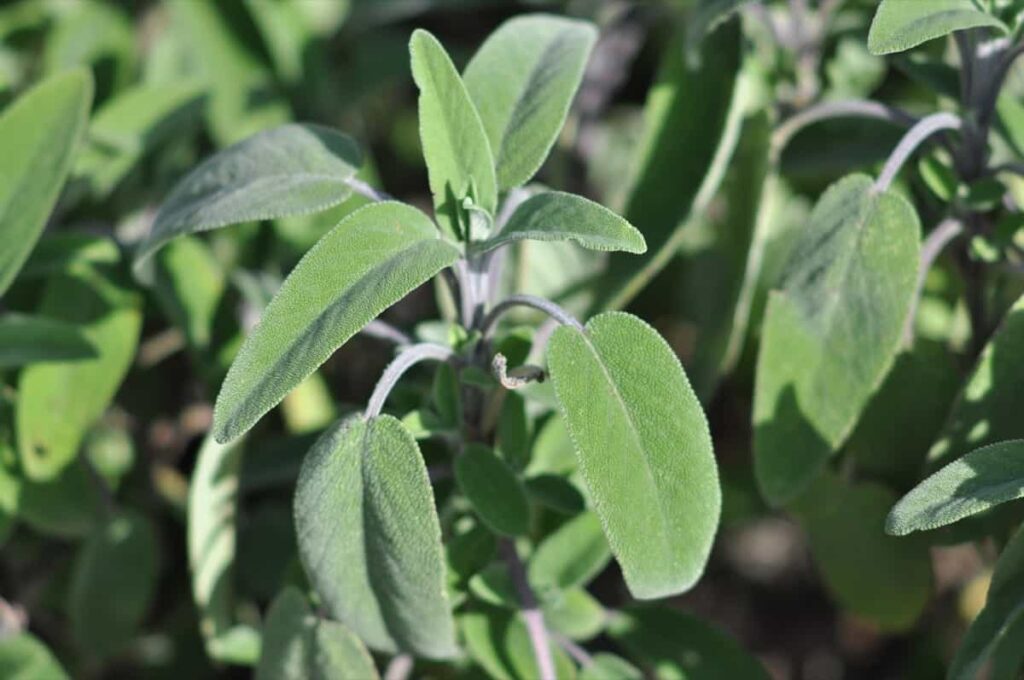
Growing Sage from seed can be a rewarding experience, both literally and figuratively. It is a beautiful plant that can add flavor to your cooking, but you’ll also get the satisfaction of growing it yourself from a tiny seed. Of course, growing Sage from seed can be challenging. It can be a bit finicky, and there are a few things you’ll need to do to give your Sage plants the best chance of success.
How to grow Sage from seed to harvest
How long does it take Sage to grow from seeds?
- Sage is a relatively easy-to-grow herb that can tolerate various conditions. If you want to grow your Sage plants from seed, sow them indoors before the last frost. They’ll germinate in three weeks, and then you can transplant the seedlings to your prepared soil. You can also propagate new Sage plants from other cuttings or by layering.
- Once the seeds have germinated, they must be transplanted into individual pots. After transplanting, water the plants thoroughly and keep them in a sunny location. They are ready to harvest when the plants are 4 to 6 inches tall. Cut the stems just above a leaf node and dry the Sage in a cool, dark place.
- Sage plants don’t produce harvestable leaves until 75 days after planting. Harvest them in the second year, not during the first. This way, they’ll establish good roots and a solid frame. Be cautious if you plan to harvest them during the first year.
In case you missed it: Mint And Sage Companion Plants, Growing Tips
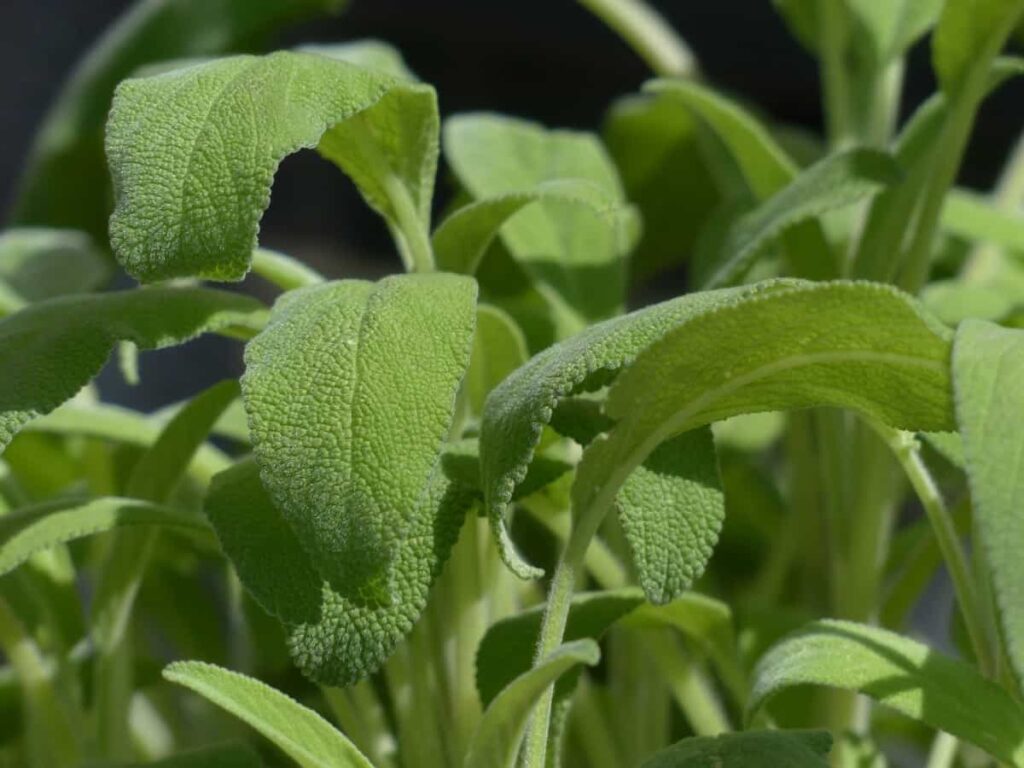
Tips to know about harvesting Sage
- Since Sage is a perennial, harvesting time will vary depending on your climate. Sage plants are harvested when they are around one year old and have much healthy new growth. Harvesting leaves in the spring and summer before the plant flowers are best for maximum flavor.
- Harvesting Sage is a simple process that requires you to pay attention to the plant. Sage is ready to harvest when the leaves are a deep green and have a soft, velvety texture. The best time to harvest Sage is in the early morning hours before the sun evaporates the essential oils in the leaves. Cut off the stems with a sharp knife or garden shears to harvest.
- To pick Sage, pinch off the leaves from the stem. Or, you can pluck new small ones that are on top. Make sure to be gentle, though, and not pull too hard. That way, you won’t damage the plant or uproot it from the ground by accident.
Best time to plant Sage seeds
You can directly sow Sage seeds into the warm spring soil when all risk of frost has passed, but it is easier to begin the seeds indoors a few weeks before the last expected frost. Sage is a beautiful and fragrant herb that can add a wonderful flavor to many dishes.
Why is my Sage growing so slowly?
- Sage is a plant that either grows very slowly or not, with few leaves, poor fragrance, and little taste. Potential causes are a lack of sun, other plants competing for nutrients, or the Sage being in the same pot and taking up all the nutrients from the soil.
- To grow from your Sage seeds, it’s essential to have suitable soil and nutrients. So, before starting this process, be sure you have a starter planter box with a mixture of potting soil and sand and some plant fertilizers.
In case you missed it: 16 Fragrant Spring-flowering Shrubs: How to Grow, Planting, and Care
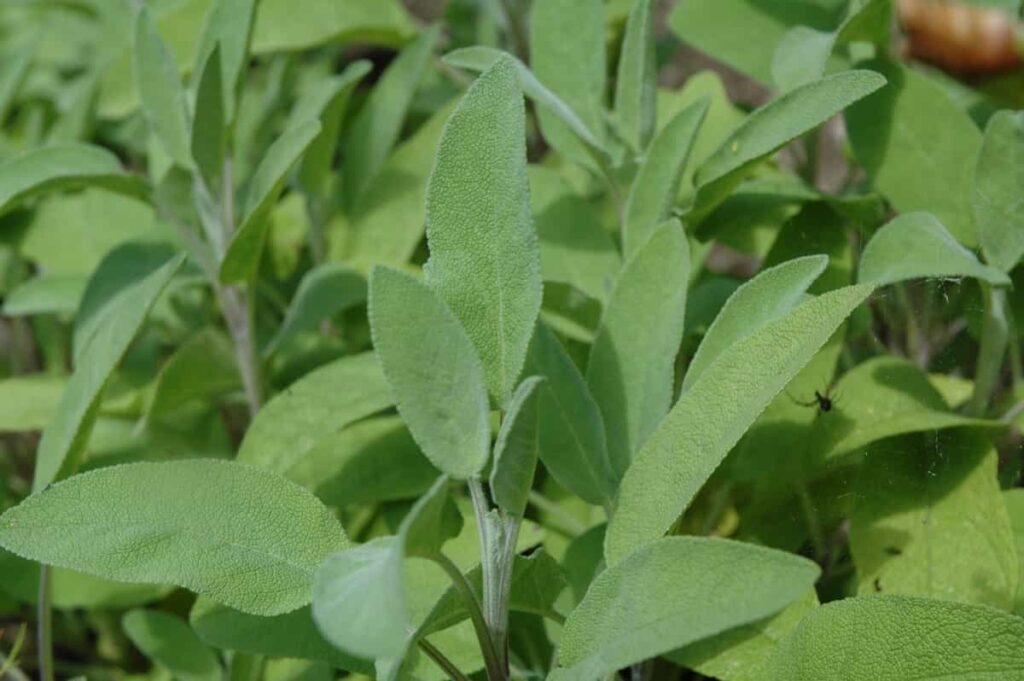
Pruning overgrown Sage
- If you cut back your Sage early, it will have trouble getting through the winter. It’s best to wait until late winter or even early spring. Now, in February, the height of the shoots should be about 5 centimeters. After you prune them, they will regrow and be lusher.
- Clip off leaves or small sprigs from the plant when needed. If a plant’s appearance begins to slow down during the first year, trim it lightly to give it time to grow fully. You should leave a few stalks on the plants so they can recover soon.
- When pruning Sage, cut just above two leaves, about a third of the way down. The plant is forced to create new growth where the leaves meet the stem by trimming off the central stem and leaves. Not only will you have more Sage plants to harvest, but they will have higher yields and overall better quality.
Should I let my Sage go to flower?
- Gardeners often pinch off the flowers so that the plants use their energy to grow tender leaves instead of seeds. If you let your plants bloom, you should cut back below the start of the blossoming stalk once the flowers fade to encourage new growth.
- Flowers are beautiful and add interest and variety to the garden. However, if you’re interested in harvesting the Sage for its leaves, you should cut back the flower stalks as they appear.
How deep do you plant Sage seeds?
You should plant Sage seeds or seedlings about 12 to 18 inches apart. To ensure proper germination, ensure the soil is at a temperature of 21°C. Spread the seeds at a depth of 1/8 inch and keep the soil moist, not wet. After planting, water the area gently and keep the soil moist until germination occurs. Sage seeds can take up to 21 days to germinate. Once seedlings appear, thin them so that there is only one plant every 12 inches. Trimming established plants back by a third in spring to encourage new growth.
Sage care in winter
- Popular kitchen herbs like Rosemary and Sage that enjoy the warmth will do better indoors during winter. Place pots of these plants near sunny windowsills, and you can use them year-round.
- Sage is a hardy herb that can survive winter in most climates. Choose a variety of Sage known as winter hardy in your region. Plant your Sage in a protected location against a south-facing wall. Mulch heavily around the base of plants to insulate them from the cold.
- Water plants regularly throughout the fall and winter, ensuring the soil stays evenly moist but not soggy. With some preparation, your Sage plants should withstand even the harshest winters.
In case you missed it: Growing Organic Sage – In Containers, And Pots

Sun requirement for growing Sage
- Sage grows best in hot, dry climates and prefers soil with excellent drainage. It will rot if left on soggy ground. To grow Sage successfully, you need to provide it with a climate that is warm in the daytime and cool at night. Sage will not tolerate temperatures that are consistently below freezing. It needs full sun, partial shade, and well-drained soil high in organic matter. Sage is drought tolerant once established, so you don’t need to water it regularly. Just keep an eye on the soil and water if it becomes dry.
- Sage is a desert plant and needs full sun to thrive. It can tolerate some shade but will not grow as well in shady areas. If you are growing Sage in an area that doesn’t get much sun, you may need to supplement it with artificial light.
Growing Sage in water
- Sage is quickly grown in water, as long as you do it right. Yes, Sage cuttings will root in water. To do this, take a 4 to 6-inch cutting from the tips of the new growth of a healthy Sage plant. Cut just below a node (the point on the stem where leaves are attached) and remove any leaves from the bottom 2 inches of the cutting.
- You should place the cutting in a glass or jar of water and then keep it in a sunny spot. Every few days, change the water to keep it fresh. Within 2 to 3 weeks, you should see roots beginning to form. Once the roots are formed, you can transplant your new Sage plant into a pot or garden bed.
Growing Sage in pots
- You can grow it with limited space outdoors in a pot or indoors in a pot without having to worry about soil or sunlight. It only needs the right environment and care to thrive. Another benefit of growing Sage in pots is that it allows you to control the plant’s environment more easily. If you live in an area with harsh winters, you can move your Sage plants indoors until the weather warms up again.
- Sage is a Mediterranean herb that prefers full sun and well-drained soil. It’s also drought tolerant, so if you’re growing it in a pot, make sure the pot has drainage holes. To plant Sage in a pot, fill it with a good quality potting mix and plant at the same depth it was in the container. Water thoroughly and then allows the soil to dry out before watering again. Sage doesn’t like wet feet. Once your Sage is established, you can start harvesting the leaves for cooking or drying. Trim the stems back about one-third after flowering to keep the plant tidy and encourage new growth.
In case you missed it: Growing Sage Hydroponically – A Full Guide
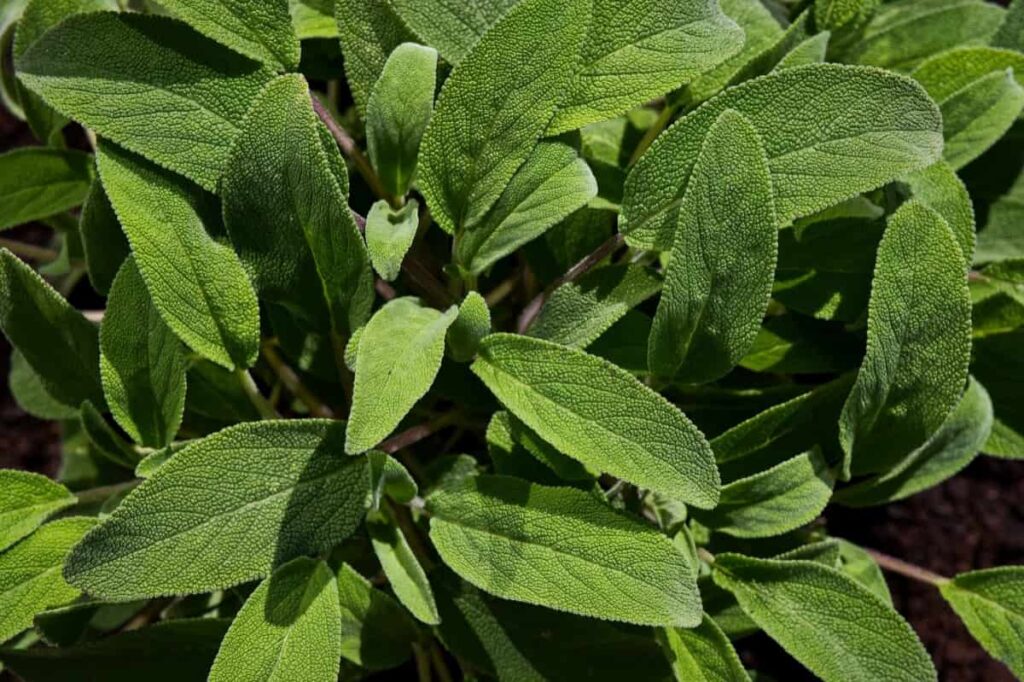
Water requirement for growing Sage
- When planting Sage for the first time, keep it well-watered as long as possible. Once your plants are established, you can reduce watering them to every 1 to 2 weeks. A plant 1 inch in height will need water every 7 to 10 days.
- When growing Sage indoors, place your pot near a sunny window for optimal growth. Water Sage sparingly, but don’t let the soil dry out. Even if the leaves appear wilted, they will perk up again once given water.
- Once your Sage plants are established, they can survive on very little water. If you overwater them, they may become leggy and produce fewer leaves.
- If your area has low rainfall, you may need to water your Sage plants more frequently. Consider using a drip irrigation system or soaker hose during extended periods of drought to keep your Sage plants hydrated.
Best fertilizer for growing Sage
- Sage doesn’t need much fertilizer, but a dose of fish emulsion in the spring will keep your plants in peak form. Meanwhile, pinch back long stems on your Sage plants to encourage them to grow bushier while trimming 2/3 of the plant off in early spring.
- Sage is a hardy herb that can grow in various climates and soil types. However, using the correct type of fertilizer is essential to ensure that your Sage plants thrive. The best fertilizer for Sage is high in nitrogen and low in phosphorus. This type of fertilizer will encourage growth and prevent flowering.
- Regarding fertilizer, you don’t need to use much Sage. Adding some will go a long way because Sage is tough and hardy. An excellent all-purpose fertilizer will suffice. Just ensure it’s low in nitrogen, as that can result in lots of leaf growth with small flower production. The first thing you’ll need to do before planting Sage as a perennial is to fertilize the soil with a low-nitrogen fertilizer like 5-10-10.
Germination of Sage seeds indoors
- Sage is easy to grow from seed and can also be propagated from cuttings. If you’re starting Sage from seed, sow the seeds indoors about six weeks before your last expected frost date. Sow the Sage seeds on the surface of the moist potting mix and press them lightly into the mix. The seeds should germinate in 10 to 14 days.
- Once the Sage plants have grown their first true leaves, they can be transplanted into individual pots or your garden bed. Choose a pot 12 inches wide with drainage holes if you’re growing Sage in containers. Sage doesn’t like to stay wet, so make sure your pot has good drainage.
- When transplanting Sage into your garden, choose a spot with full sun and well-drained soil. Sage is tolerant of many soils but does best in sandy or gravelly loam soils. Amend clay soils with sand or organic matter to improve drainage. Once your Sage plants are established, they’ll need very little care. Water them deeply once a week.
In case you missed it: 47 Key Rules for Effective Vegetable Garden Management: From Planning to Reducing Cost
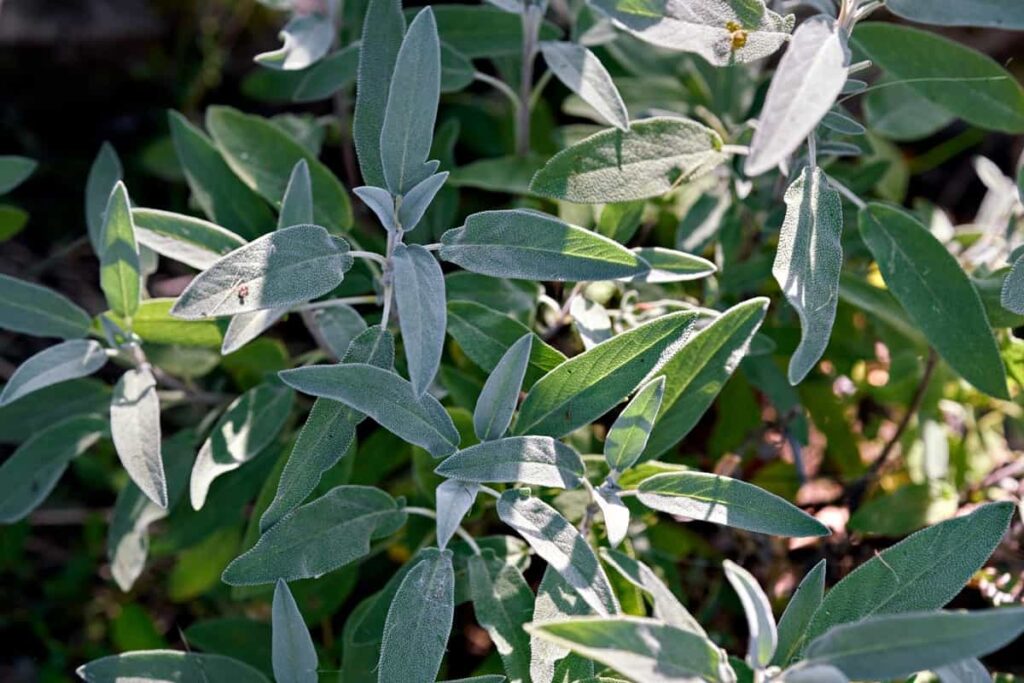
Soil requirement for growing Sage
- Sage is a woody, evergreen shrub native to the Mediterranean. Sage can be propagated from seed, but it can be tricky. The key to success is to start with a fresh, high-quality seed and to sow it in well-drained soil. Sage prefers full sun but will tolerate some shade. It grows best in sandy, well-drained soils. If your soil is heavy or clay-based, you can improve drainage by adding organic matter such as compost or peat moss.
- To sow Sage seed, fill a planting tray or pot with a good quality seed starting mix. Water the mix thoroughly and then let it drain before sowing the seed. Sow the Sage seeds on the surface of the mix and then lightly cover them with different mixes or sand. Gently mist the surface of the planting mix to settle the seeds into place.
Conclusion
Growing Sage from seed to harvest is not that tricky but requires patience. Sage is a hardy plant that will thrive in most conditions, but it does need regular watering and plenty of sunlight to produce the best results. Start your plants indoors in late winter or early spring, and transplant them outdoors after the last frost date. When the plants are big enough, you can begin harvesting the leaves for cooking or drying. You can enjoy fresh Sage all season long with a bit of care and attention.
- How to Grow Hibiscus from Flower
- Plantation Ideas for Home Decoration: A Beginners Guide
- Flower Garden Designs and Layouts for Beginners
- Planting and Spacing Techniques in Papaya: A Beginner’s Guide
- Growing Gold: Essential Techniques for Planting Pineapples
- How to Make Kalanchoe Plant Bushy: Home Remedies and Solutions
- 11 Reasons Why Your Gardenia is Not Blooming: Home Remedies and Solutions
- Eco Elegance: The Guide to Designing a Drought-Tolerant Landscape
- Gardening on a Slope: Strategies for Hillside Landscaping
- Nourish and Flourish: Top Organic Mulches for Thriving House Plants
- Everything You Want to Know about Indian Mogra Flower: Discover Uses and Growing
- Green Thumb Success: Expert Tips for Cultivating Greenhouse Pumpkins All Year Round
- Maximize Growth & Flavor: The Ultimate Guide to Companion Planting in Herb Gardens
- How to Control Rhododendron Problems Naturally: Home Remedies and Organic Ways to Fix Them
- Natural Magic: The Remarkable Benefits of Cinnamon for Plants
- Best Steps to Revive Dying Tulip with Natural and Organic Treatment
- 10 Reasons Why Your Angel Trumpet is Not Blooming: Remedies and Treatment
- How to Fix Periwinkle Leaf and Flower-Related Problems: Natural Remedies and Solutions
- How to Fix Zinnias Leaf and Flower Problems: Discover Natural and Home Remedies
- Organic Steps to Induce Lemon Tree Flowers: A Comprehensive Guide
- Bloom Booster: Crafting the Perfect Homemade Bougainvillea Fertilizer
- Optimizing Growth: A Guide to Applying NPK Fertilizer for Potted Plants
- 10 Best Homemade Fertilizers for Rubber Plant: DIY Recipes and Application Method
- How to Boost Female Pumpkin Flowers: Effective Steps for More Flowers and High Yields
- Transform Your Indoor Garden: Top Benefits of Pink Salt for Houseplants
- 10 Best Homemade Fertilizers for Peacock Plants (Calathea): Easy DIY Guide
- Unlock Blooms: 9 Reasons Why Your Potted Chrysanthemum is Not Blooming
- 8 Reasons Why Your Potted Hibiscus is Not Blooming: Fix it with Simple Solutions
- Unlock Blooms: 9 Key Reasons Your Potted Frangipani Won’t Flower
- 10 Reasons Why Is My Ice Plant Not Blooming: Remedies and Treatment
- 10 Reasons Why My Potted Hydrangea Not Blooming: Treatment and Remedies
- 10 Reasons Why is My Wisteria Not Blooming: Remedies and Treatment
- 10 Reasons Why is My Goldfish Plant Not Blooming: Remedies and Treatment
- Maximize Your Space: Ultimate Guide to Balcony Gardening with Grow Bags
- 10 Reasons Why Your Iris is Not Blooming: Remedies and Treatment
- 10 Reasons Why Your Anthurium Plant is Not Blooming: Treatment and Remedies